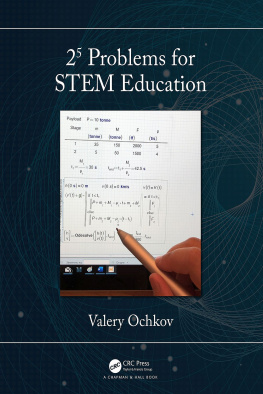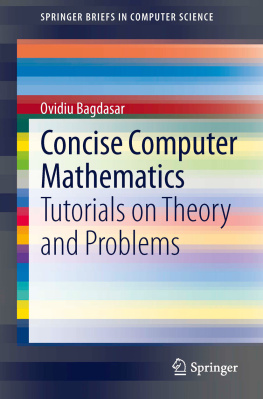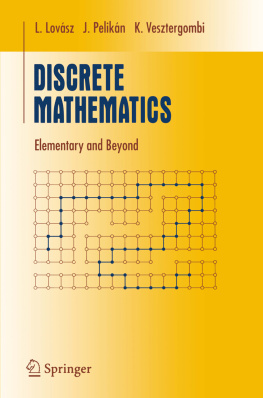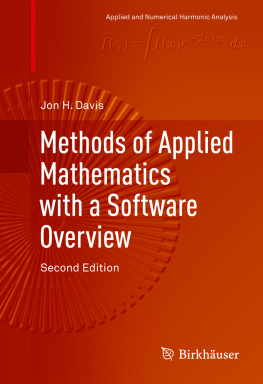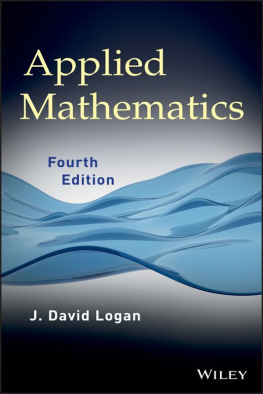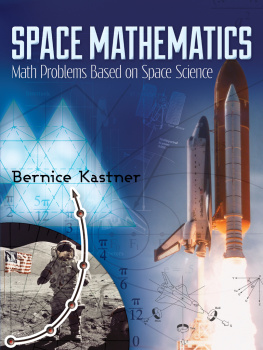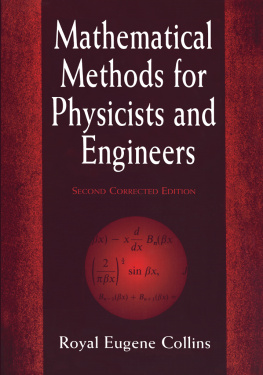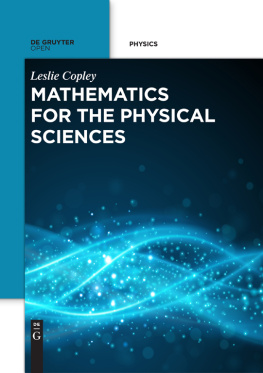Mathematics for the Life Sciences
Mathematics
for the Life Sciences
Erin N. Bodine
Suzanne Lenhart
Louis J. Gross
PRINCETON UNIVERSITY PRESS Princeton and Oxford
Copyright 2014 by Princeton University Press
Published by Princeton University Press, 41 William Street, Princeton,
New Jersey 08540
In the United Kingdom: Princeton University Press, 6 Oxford Street,
Woodstock, Oxfordshire, OX20 1TW
press.princeton.edu
All Rights Reserved
Library of Congress Cataloging-in-Publication Data
Bodine, Erin N.
Mathematics for the life sciences / Erin N. Bodine, Suzanne Lenhart, Louis J. Gross.
pages cm
Summary: The life sciences deal with a vast array of problems at different spatial, temporal, and organizational scales. The mathematics necessary to describe, model, and analyze these problems is similarly diverse, incorporating quantitative techniques that are rarely taught in standard undergraduate courses. This textbook provides an accessible introduction to these critical mathematical concepts, linking them to biological observation and theory while also presenting the computational tools needed to address problems not readily investigated using mathematics alone. Proven in the classroom and requiring only a background in high school math, Mathematics for the Life Sciences doesnt just focus on calculus as do most other textbooks on the subject. It covers deterministic methods and those that incorporate uncertainty, problems in discrete and continuous time, probability, graphing and data analysis, matrix modeling, difference equations, differential equations, and much more. The book uses Matlab throughout, explaining how to use it, write code, and connect models to data in examples chosen from across the life sciences. The text provides undergraduate life science students with a succinct overview of major mathematical concepts that are essential for modern biology, covers all the major quantitative concepts that national reports have identified as the ideal components of an entry-level course for life science students, and provides good background for the MCAT, which now includes data-based and statistical reasoning. The book explicitly links data and math modeling, includes end-of-chapter homework problems, end-of-unit student projects, select answers to homework problems, and provides an online supplement with Matlab m-files and an R supplement. It prepares students to read with comprehension the growing quantitative literature across the life sciences, gives an online answer key, solution guide, and illustration package (available to professors)Provided by publisher.
Includes bibliographical references and index.
ISBN 978-0-691-15072-7 (hardback)
1. BiologyMathematical models. 2. Mathematics. I. Lenhart, Suzanne. II. Gross, Louis J. III. Title.
QH323.5.B63 2014
570.151dc23
2014006493
British Library Cataloging-in-Publication Data is available
This book has been composed in 
Printed on acid-free paper.
Printed in the United States of America
10 9 8 76 5 4 3 2 1
Dedication
This book is dedicated to Bryan and Vellie Barnes, Peter and Phillip Andreae, and Marilyn Kallet and Heather Gross.
Contents
Preface
Science is thought to be a process of pure reductionism, taking the meaning out of mystery, explaining everything away, concentrating all our attention on measuring things and counting them up. It is not like this at all. The scientific method is guesswork, the making up of stories. The difference between this and other imaginative works of the human mind is that science is then obliged to find out whether the guesses are correct, the stories true. Curiosity drives the enterprise, and the open acknowledgement of ignorance.
(Lewis Thomas, Sierra Club Bulletin, March/April 1982, p. 52)
The above quote from Lewis Thomas is a wonderfully succinct summary of the scientific process. It includes two main components that directly relate to the objectives of this text: the making up of stories and how we find out whether the guesses are correct, the stories true. The stories we tell in science are called theories and models. Theories may be thought of as a general summary of how the world works, developed from many observations (in biology these would be in natural systems and in laboratory settings) and allowing us to generate hypotheses about what we expect to occur under different circumstances. Models are elaborations of particular aspects of theories, developed to elucidate specific issues that the theory can address.
A major theory in biology is that an organisms characteristics (morphology, size, physiology, behavior, etc.) are shaped by the processes of natural selection. Organisms with characteristics that enable them to better survive and reproduce are selected for. This means that, over time, all else being held fixed, organisms with those characteristics will increase in frequency, if such characteristics are heritable. Here, heritability means that the tendency to display such characteristics is possible to pass on to the organisms offspring. This is the essence of evolution by natural selection, and this general theory has produced an enormous number of hypotheses that have been found to be accurate from observations and experiments on a vast array of organisms and biological systems.
A large number of models rely on the theory of evolution to make predictions about the genetics, behavior, morphology, and relationships between organisms. These models allow us to predict the genetic response of bacteria populations in a human or livestock host to antibiotic use, the changes in strains of the HIV virus in an infected individual, the circumstances under which we expect to find organisms that reproduce once during their lifetime as compared to those that reproduce several times, and what shapes and sizes of leaves we expect to find on plants in desert versus those in temperate systems.
The second component of the above quote deals with determining whether our scientific stories are correct. This is done by using data of all types to determine whether the model hypotheses and predictions are consistent with the data. We call this process testing or evaluating models, and the first part of this text deals with some of the basic methods for using data to test models. This is part of the field of statistics, and an objective in this text is to help you appreciate how we can use the methods of descriptive statistics to summarize and display data. It is then possible to use these data summaries to evaluate model hypotheses. Throughout this text, we will use data to point out the utility of mathematics in investigating biological questions. We have chosen examples with data from across the biological sciences, but we make no attempt to cover the huge breadth of examples that could be used to illustrate each mathematical topic.
Models in biology can be of several different types. They can be expressed verbally, mathematically, or in computer language. Models can also be real in the sense that biomedical science often uses animal models as substitutes for humans or uses cultures of cells to investigate responses that would be more difficult to determine from experiments on whole organisms. Similarly, rather than trying to carry out experiments on whole ecosystems, ecologists use microcosms and mesocosms (think of these as aquaria and terraria with different collections of species within them) to determine how the ecosystem might respond to changes, such as harvesting.
In using any of these models, we should ask the same basic questions: what is the objective for the model (e.g., what do you want to use the model to learn about), and how you would assess whether the model is useful for the purposes for which you intend to use it? In biomedical science, for example, there is a large literature on the use of animal models that provide some guidance as to whether a particular animal (or cell) is an appropriate model to use to address a question for which the ultimate goal is to relate the results to humans. Unfortunately, there is little agreement on the best ways to determine whether a particular model is correct, and so mice may be used as a surrogate for humans, for example, in evaluating the efficacy of a new drug, but the response of the mice may be quite different from what a human response would be to the drug.
Next page

